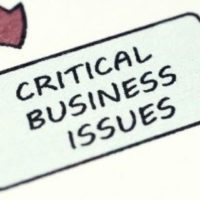
 The Real Relationship between PR and Marketing
The Real Relationship between PR and Marketing
An understanding between PR and Marketing is the ultimate fundamental that will make a difference between business failure and success, business mediocrity and greatness.
With the private sector adding 271,000 job in December (2018), the competition is fierce—PR is your ticket to get ahead.
The U.S. private sector added 271,000 jobs in December reported by the Wall Street Journal (medium-sized businesses added 129,000 jobs, while small businesses added 89,000), driven by hirings at medium-size businesses and in the service sector. Yet U.S. stocks ended the worst year since the financial crisis with a narrow gain in thin pre-holiday trading, reported by Bloomberg. The year of 2018 was a roller-coaster ride in the world of politics—and while it is impossible to know exactly how the 2019 new year will go, the hot issues and trouble spots have already begun emerging.
With that said, what garners trust in a volatile period? Goodwill. In fact, 20% of the entire market cap is based on goodwill—meaning, reputation. Reputation IS public relations. Yet, it is a bit disconcerting to learn that a significant percentage of the corporate executives heading some of the most successful companies in the U.S. may not be getting the very real market rewards open to them by correctly using Public Relations in conjunction with their marketing.
Based on market research done with business leaders named to the U.S. Inc. 5000 list, JoTo PR found that over 46% of the CEO’s surveyed confuse PR with advertising—they actually don’t know the difference and believe PR is merely some form of promotion.
 But to be fair, Public Relations and Marketing firms have obviously done an abysmal job of educating their clients, and the business world in general, on the correct use of PR and how exactly it relates to Marketing.
But to be fair, Public Relations and Marketing firms have obviously done an abysmal job of educating their clients, and the business world in general, on the correct use of PR and how exactly it relates to Marketing.
Let’s face it. Marketing does not work the way it did before 2009. People want to know you are credible before they buy.
– People know you by your reputation – the only way to convince people of your repute is to execute an effective PR campaign.
- Then follow it up with marketing to sell them something
- Then you sell them something
- Then you deliver what is promised.
- Then you sell them something
Since most CEOs are not educated in PR and communications. They therefore misunderstand the role of Public Relations(1), it is up to the people running PR and marketing agencies to educate their clients. To fail to do this is counterproductive.
An uneducated client may inadvertently ruin an entire PR campaign by running a marketing campaign that fails to consider or use the public perception that PR has worked hard to establish. Or even worse, in the case where the marketing campaign runs against or contrary to the acceptable market position established by PR. And not to beat a dead horse, an un-briefed CEO can quickly destroy months of work with a publicity utterance of just a few wrong words.
Common Misconceptions about Public Relations; What IS PR?
A common misconception about Public Relations is that it is completely separate from marketing; that effective marketing can be done without PR.(2)
 Nothing could be further from the truth.
Nothing could be further from the truth.
These two subjects are actually intrinsic to each other as they both ultimately have the same goal—a positive result from the public, whether it is in the acquisition of acquired admiration, trust or respect, or whether if it is in the form of product interest and purchase.
There is a natural flow and order to the use of the subjects of PR to marketing, which is almost always violated by most businesses.
Ordinarily, a business creates a product or service and then simply starts promoting it; in many cases this process gets less-than-great results despite having a terrific offering and very well executed marketing communications.
The reason: the people you are trying to convince to purchase your offering don’t know you well enough, may not trust you or may not believe your marketing message.
“Advertising should follow PR in both timing and theme. Advertising is a continuation of public relations by other means and should be started only after a PR program has run its course.
“Furthermore, the theme of an advertising program should repeat the perceptions created in the mind of the prospect by the PR program.” (3)
Why do you think Apple has sold so many products? Yes, their products are good, but so are many of the similar products offered by their competitors—at lower cost. Yet Apple has been the Big Man on Campus as far as familiarity, respect and sales.
One very big reason Apple has sold so many products is because people believed in and trusted Apple. (4)
Trust can be very contagious. The more people that saw other people with Apple products and heard how much they like them, the greater the trust and familiarity became toward Apple as a Corporation and for their products.
Apple’s corporate trust and admiration even translated into respect and admiration for their late CEO, Steve Jobs. That is the power inherent in third-party endorsements—others saying your products, services and corporation are wonderful. That is the power that a good PR campaign will channel (and it IS supposed to channel – not be something separate) so that when you do run your marketing campaign it is well received with some degree of familiarity and trust.
But now look at Apple—their stock just dove and CNBC reported two hours ago that every major analyst thinks of Apple’s warning on iPhone sales as the ‘Biggest miss in years’.
What happened just before that in 2018? PR mishaps. Distrust. Deliberately slowing down older iPhones but hiding it from their customers. And more allegations abound—sales ban in China, watch defect, iPad Pros prone to bending, Apple boycott in China… it’s all about reputation, folks.
The New Digital Media
 Today, Social Media PR makes Public Relations more powerful than ever before. It can be used effectively to improve your company’s image and to garner trust through other user’s experience.
Today, Social Media PR makes Public Relations more powerful than ever before. It can be used effectively to improve your company’s image and to garner trust through other user’s experience.
Consumers can post their product “Like’s” on Facebook, they can Tweet about them, they can discuss them in Chats, they can Blog about them. Consumers can get your message out in ways that you cannot. Bloggers are fast becoming a respected media source, no longer looked at as the “new kid on the block,” as their influence reaches millions of (built-up and fostered) followers by just one stroke of the keyboard.
But you have to know how to channel and use that power. It is not just a matter of “throwing up an FB page”; what you do with that page is what it’s all about. Same goes for any use of social media, including blogging.
At JoTo PR, we use social media heavily to help our clients. More than 70 percent of online media journalists and other content contributors use social media. (5)
The Correct Use of Publicity & PR: Acquiring Trust First
 So how do you acquire trust and familiarity for your business and your products? Public Relations.
So how do you acquire trust and familiarity for your business and your products? Public Relations.
In an ideal world, PR would always be done before marketing starts; there is a natural law behind this. (6)
This fundamental concept applies to all aspects of life, not just business. A business or a person’s reputation and activities should precede them to make communication and transactions smoother, easier, faster or even possible at all.
It applies to dating or marrying someone, it applies to selecting a school for your children, it applies to voting for a politician (although you are still likely to be disappointed with a political choice at one time or another—the reason being that politicians often misapply Public Relations by lacing their PR with “white lies” or in some cases with blatant distortions. In the end they are always found out.) So, remember, always be truthful in your PR as well as in your marketing.
In a similar way that a person who doesn’t know you well enough would not be inclined to date you, or in the same way that you would not entrust your children to anyone that you had no familiarity or comfort with, so too will an individual who does not know your company to some degree be hesitant to doing business with it. And to further compound the felony, they may in fact do business with a competitive company they are more familiar with despite paying more for an inferior product or service.
The power of familiarity, trust and credibility (aka Public Relations) is usually severely underestimated by business executives and not addressed seriously enough prior to launching a marketing campaign for a new commodity.
For these and other fundamental reasons is why you should definitely apply the core concepts of good public relations to any venture you decide to embark upon.
It’s Never Too Late to Execute a Strategic Communications Plan
 It is almost never too late to start a public relations campaign. Even when your reputation has already been smeared, the solution to gaining back ground and even once again attaining a good reputation is possible with correct application of PR. The specifics of that methodology are contained in a sub-section of Public Relations known as Crisis Management PR and its sub-category Reputation Management.
It is almost never too late to start a public relations campaign. Even when your reputation has already been smeared, the solution to gaining back ground and even once again attaining a good reputation is possible with correct application of PR. The specifics of that methodology are contained in a sub-section of Public Relations known as Crisis Management PR and its sub-category Reputation Management.
A classic example of Crisis PR (and reputation management) is the case of Bill Clinton. Remember Monica and Clinton’s near impeachment? While people do remember her and the infamous proceedings where he was caught in a lie, President Clinton became more highly respected and admired than ever before—post Monica. So much so that while Clinton went into the White House with a net worth less than one million dollars, his worth became estimated to be above $80,000,000. (7) That popularity and demand for his services were the results of very good public relations work. Clinton was instinctively a master of PR, but even he knew better than to go it alone and instead made good use of professional PR people to craft and oversee the management of his image and PR activities. These led to lucrative speaking engagements and other revenue sources.
But now look at him. Resting on his laurels or just not seeing the need to stay at the top of the PR game, Clinton’s reputation slid in many corners–and now is the subject of ridicule and tied to the #MeToo debate.
The point is–reputation and PR is not happenstance. For those that master it–they control it.
Any attempt at image management or increased product market share will be handicapped without the use of effective PR laying the groundwork first. In today’s electronic marketplace, a marketing plan without considering Public Relations is akin to spitting on a raging fire in an attempt to squelch the flames – the fire is the onslaught of messages attacking your target markets’ minds EVERY DAY. The spit is your marketing effort (which adequately describes how much spitting you have to do to put out the fire that continues to grow.)
Ask yourself, how many new products are glutting the market each day, week and year? And even if you have enough money to pour at that raging fire, imagine how much spit (marketing effort) it would take to get that fire out.
A much wiser option would be to use some of that money more effectively to shape people’s image of your company BEFORE they see your advertising asking them to buy from you. Get them to think highly of you first and then send them your sales promotion. With the proper utilization of Business PR & Publicity, people will become more familiar, interested and comfortable in doing business with you.
So what do you do now? Simple.
Recognize that you do not know all there is to know about Public Relations. Realize that your business and marketing efforts could highly benefit from the application of expertly done public relations on your behalf. Hire experts in the field with proven results.
Karla Jo Helms
JOTO PR CEO
888-202-4614
Contact: JoTo PR for a Complimentary PR Consultation
____________________
(1) Gaining influence in public relations: the role of resistance in practice – By Bruce K. Berger, Bryan H. Reber (2) Public relations and marketing: The boundaries blurred and the functions blended – ©1998 Michael Turney (3) The Fall of Advertising and The Rise of PR – by Al Reis, page XII Introduction (A Continuation of PR) (4) PC Magazine: Why Apple Is So Successful – By Tim Bajarin (5) More than 70% of Digital Influencers Engage with Public Relations Professionals Through Social Media – Cisionwire (6) What Is Public Relations? It’s a natural phenomenon – by Robert A. Kelly (7) Bill Clinton Net Worth – Celebrity Net Worth



